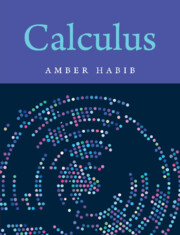Book contents
Summary
In this chapter, we take a closer look at the idea that local information about functions should help us resolve integration problems.We already saw that continuity guarantees integrability. Another application of continuity combined with integration was in enabling the definition of the trigonometric functions. On the other hand, continuity did not give us new tools to calculate integrals. In this chapter we shall study the stronger property of differentiability, which will eventually give us techniques for calculating integrals. It also has its own significance, independent of integration. We shall use it for a better understanding of the shapes of graphs of functions.
Among the continuous functions, the ones that are easiest to integrate are the “piecewise linear” ones. Their graphs consist of line segments, such as in the example below:
This suggests that we try to locally approximate functions by straight line segments. If we can get good approximations of this type, we can use them to assess the integral. We shall give the name “differentiable” to functions that can be locally approximated by straight lines. Most of this chapter is devoted to identifying these functions and to calculating the corresponding straight lines. Then we make the first connection between the processes of differentiation and integration, the so-called first fundamental theorem of calculus. Finally, we see that differentiation has a life of its own, and we use it to explore the problems of finding the extreme values and sketching the graph of a function.
Derivative of a Function
Let us consider what happens if we zoom in for a closer look at the graph of a function such as y = x2, near a point such as (1,1).
We see that the graph of the function y = x2 looks more like the line y = x2 - 1 as we zoom in towards (1,1), and at some stage becomes indistinguishable from it.
This can happen even for functions with rapid oscillations. Let us look at the function defined by y = x2 cos(1/x) if x ≠ 0, and y = 0 if x = 0, near the origin.
No matter how much we zoom in, the function has infinitely many oscillations. Nevertheless, their amplitudes decrease and in that sense the function becomes closer to the line y = 0 as we zoom in.
- Type
- Chapter
- Information
- Calculus , pp. 129 - 172Publisher: Cambridge University PressPrint publication year: 2023



